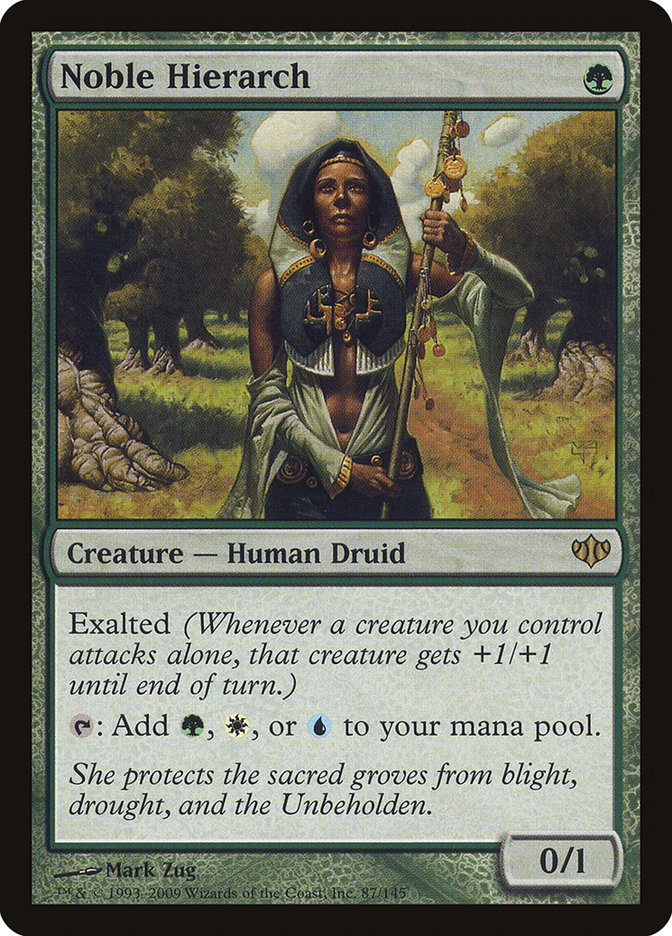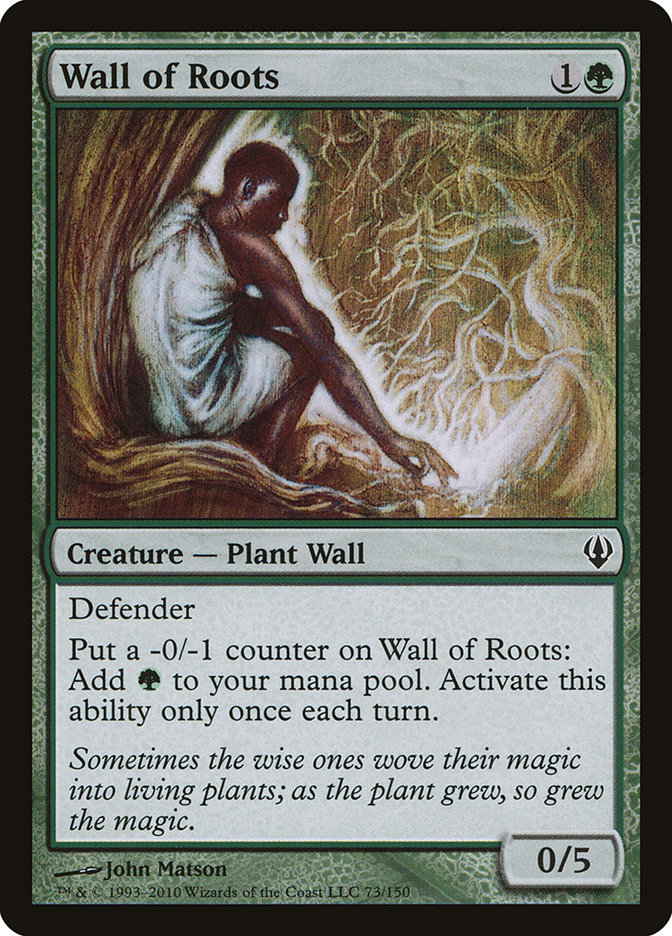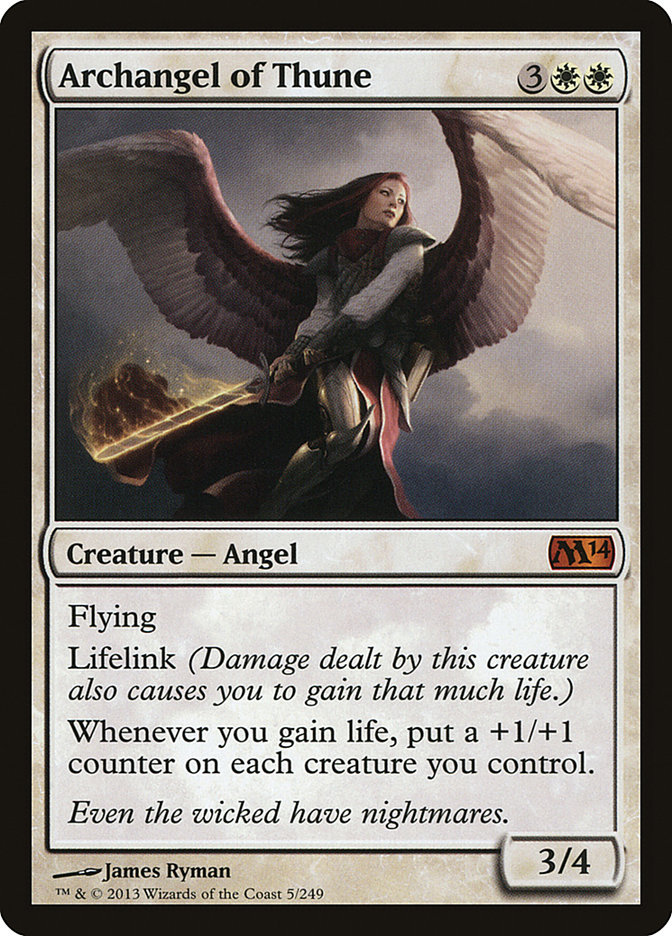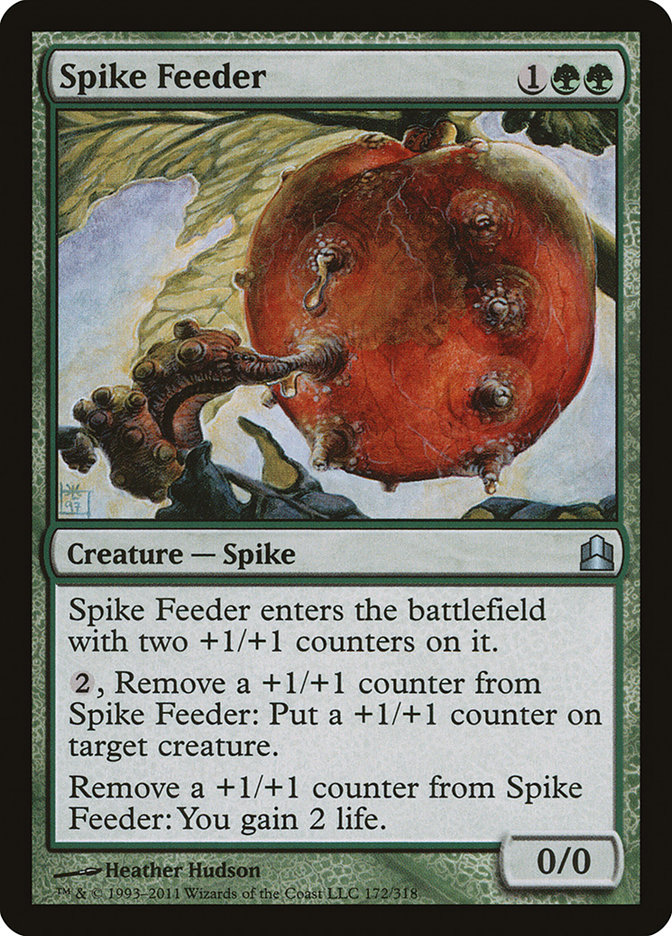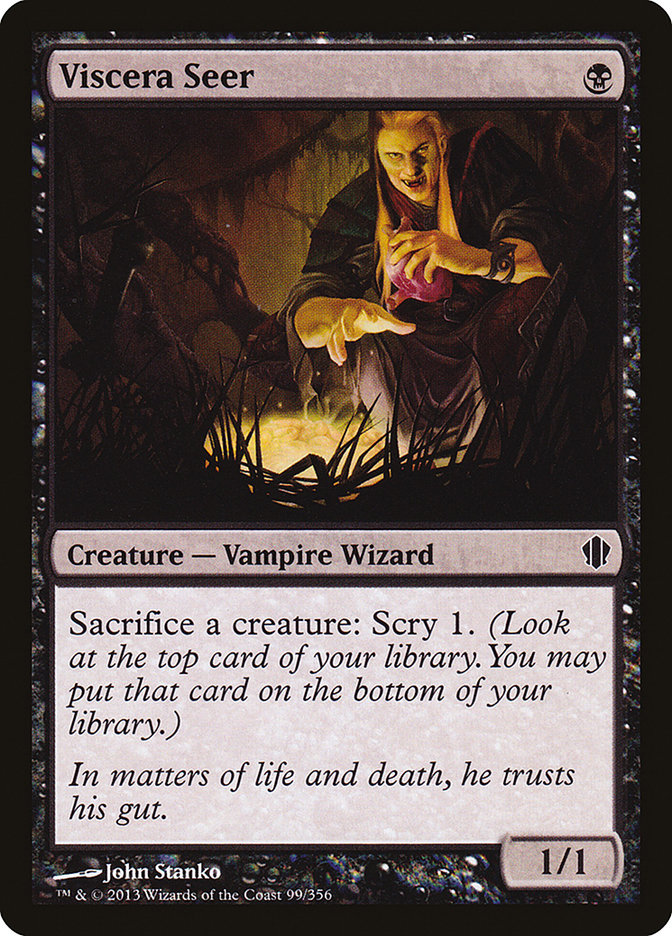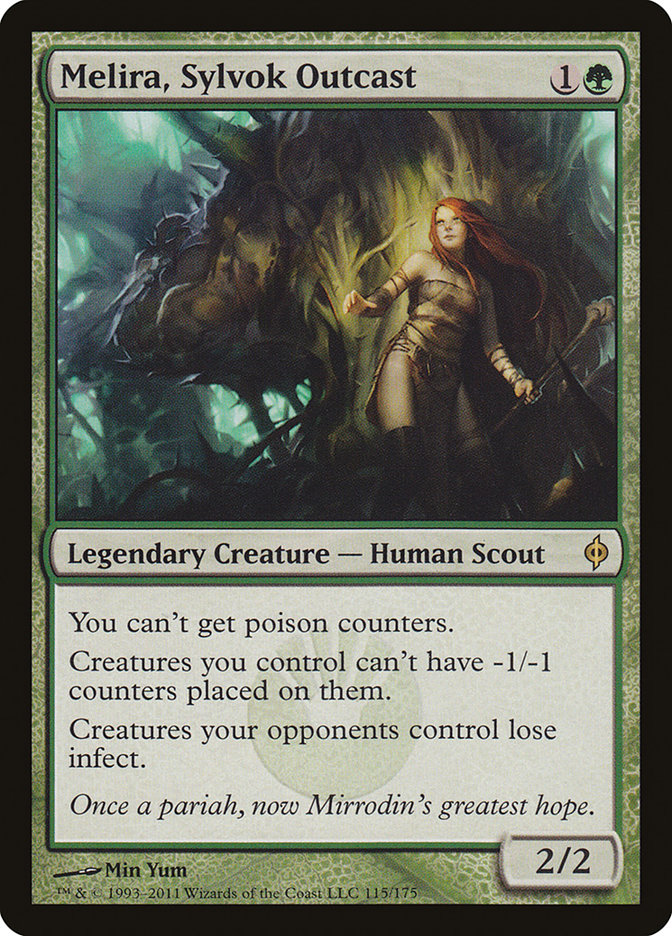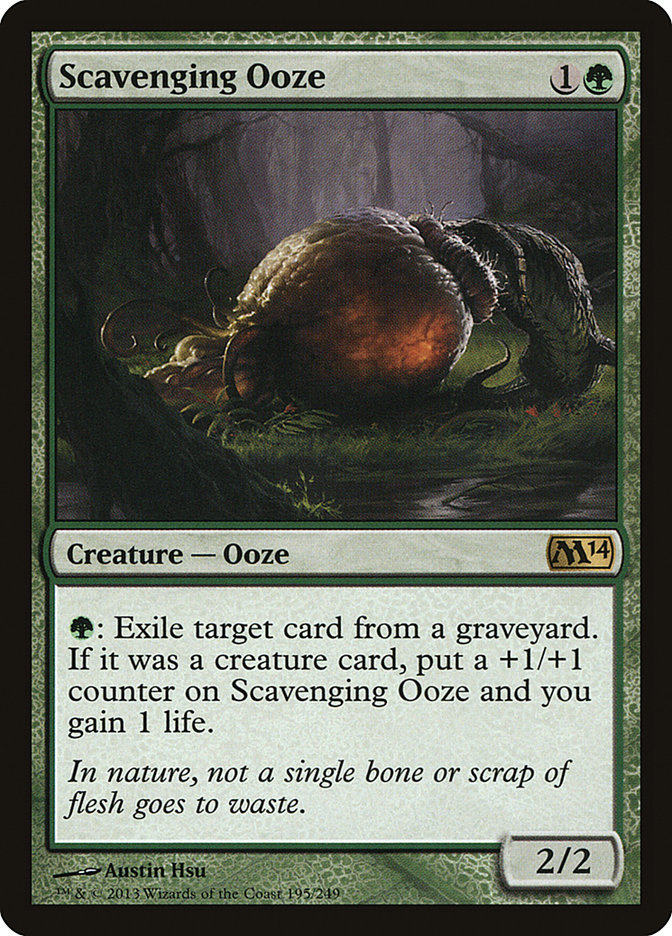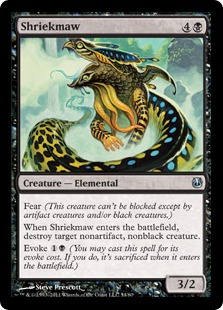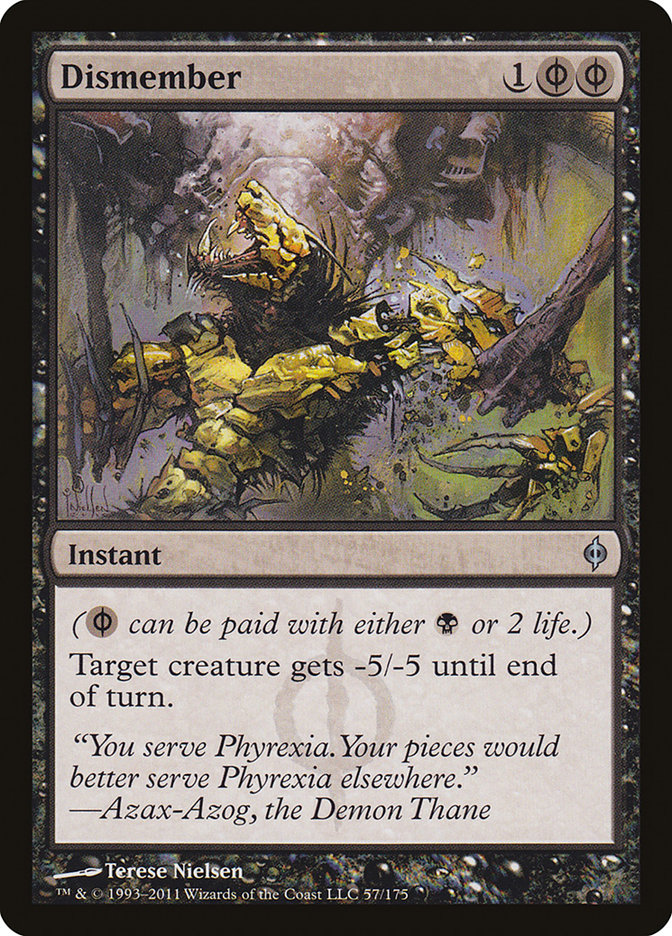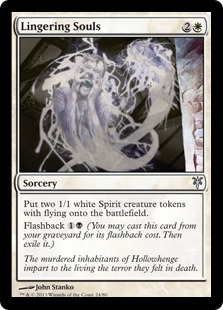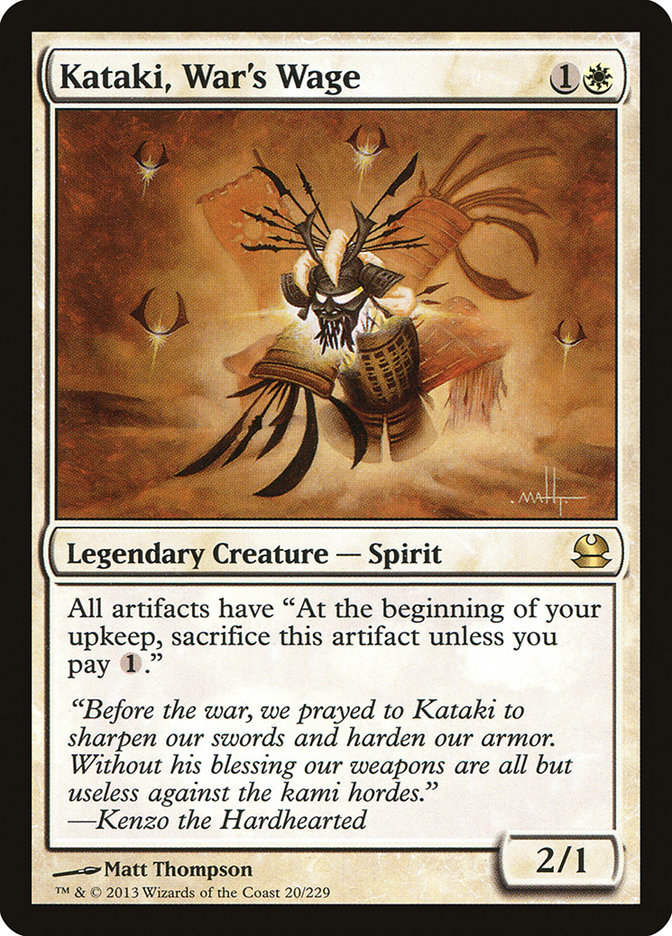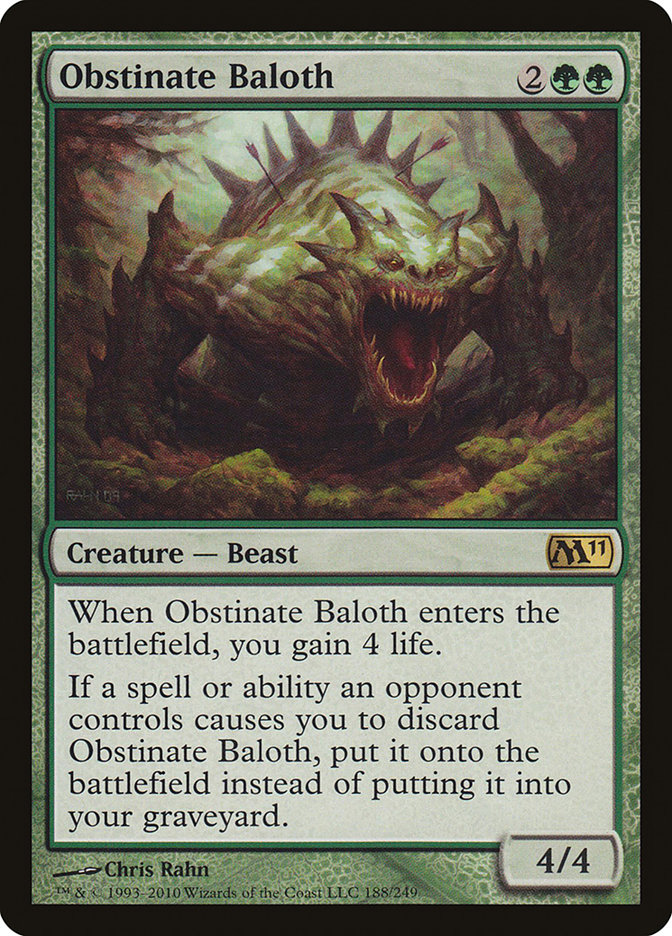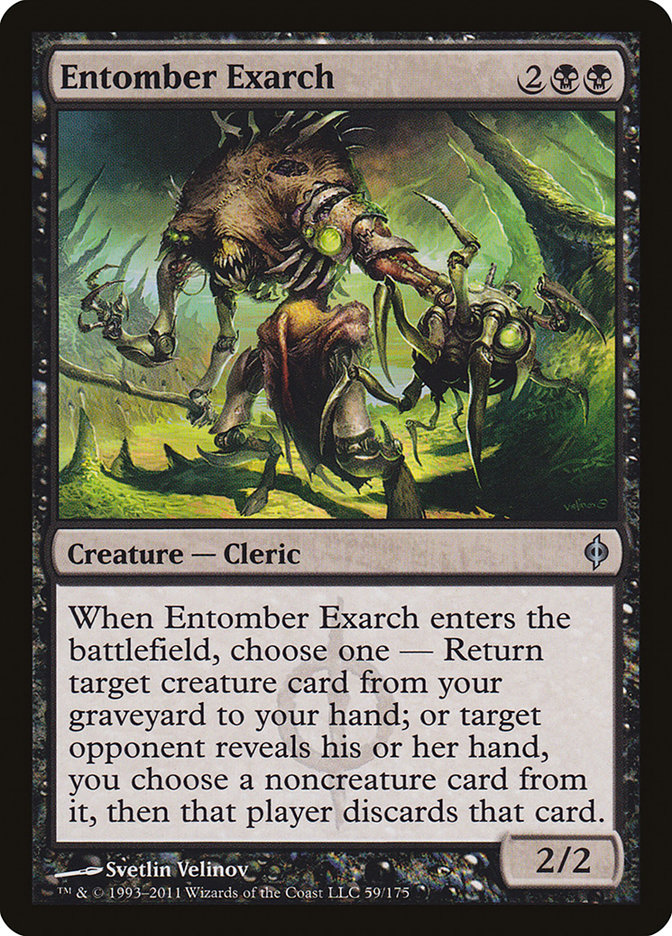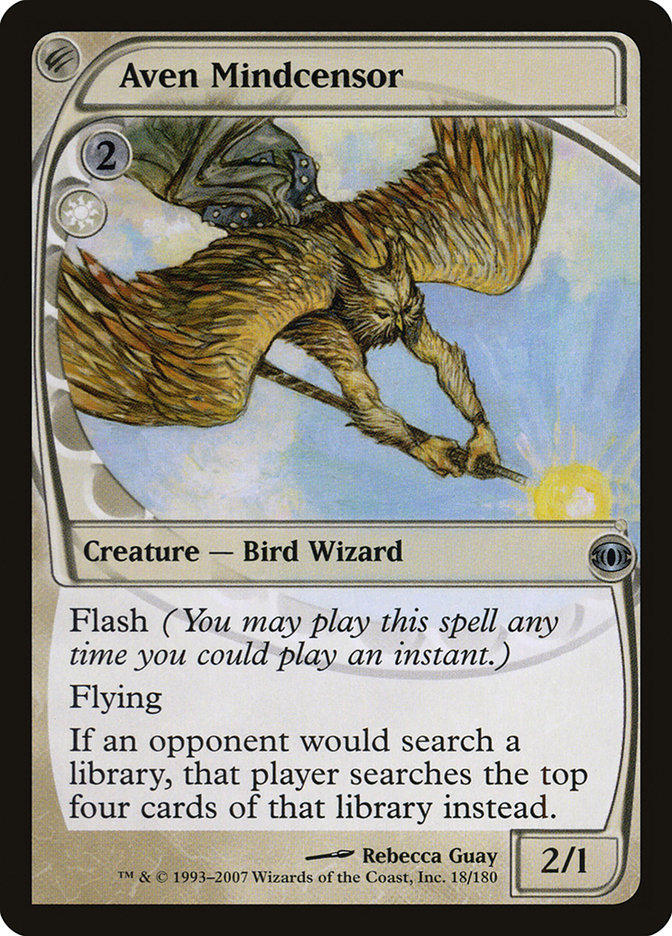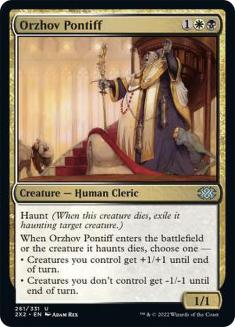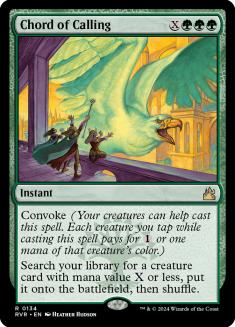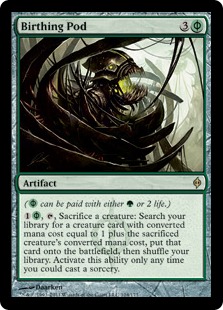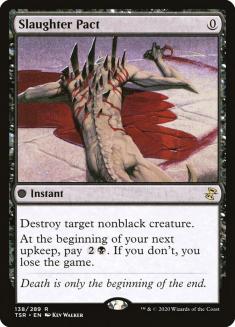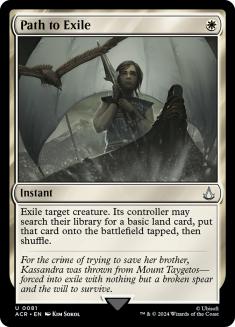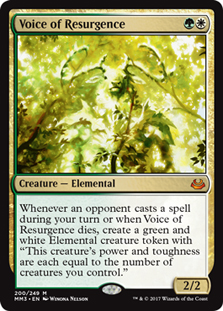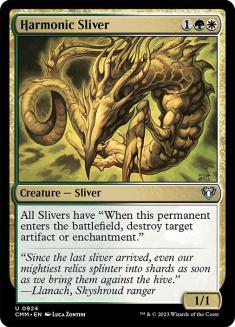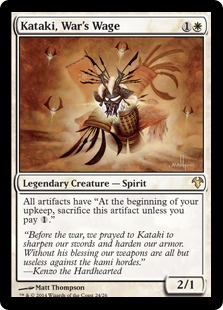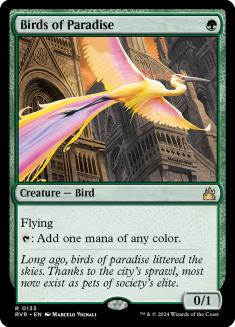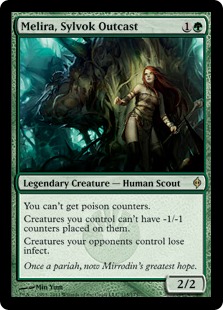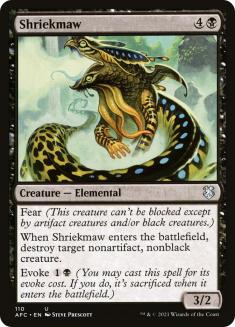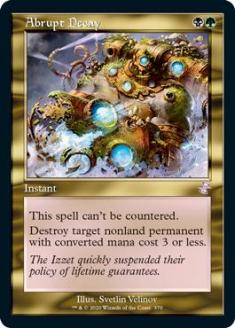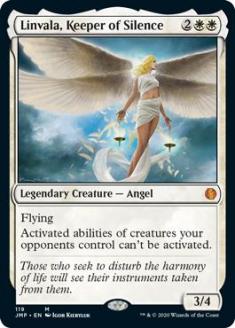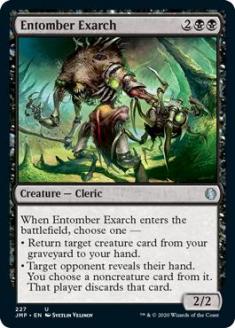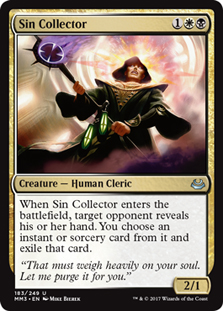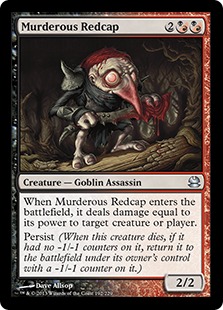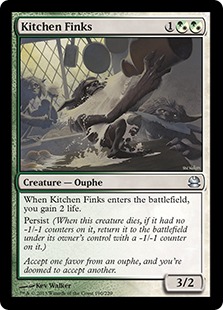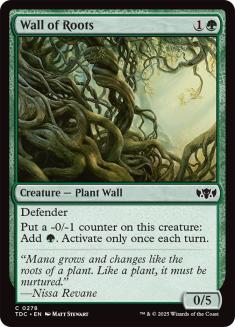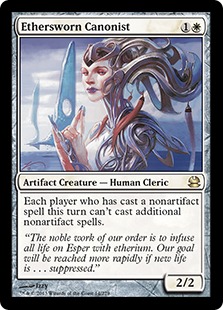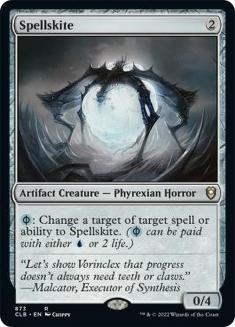For my first ever article for StarCityGames.com, I want to talk about my favorite format in Magic: Modern! More specifically, I want to talk about Melira Pod. If you’re considering playing Pod at Grand Prix Richmond this weekend, then this is the article for you. Before I get started, however, I feel like I should provide some background information on my previous experience with the deck and why I feel I am qualified to write this primer.
The card Birthing Pod has been singlehandedly responsible for qualifying me for nine out of the twelve Pro Tours I’ve ever qualified for. I first fell in love with Melira Pod when I audibled to it the night before Grand Prix Lincoln and managed to achieve my best Grand Prix result at the time: a Top 32. After that I played the deck for an entire PTQ season and managed to win one of the last Magic Online PTQs of the season. About a year later I lost in the finals of two PTQs in one season, which set me up to receive a sponsorship exemption for Pro Tour Dragon’s Maze. Recently I won Grand Prix Detroit with the deck, and just last weekend I came in eleventh place at Pro Tour Born of the Gods with none other than Melira Pod.
Why should you play Melira Pod?
Is Melira Pod the best deck in Modern? Possibly. Possibly not. Similar to Legacy, I believe that Modern is a format that greatly rewards you for knowing your deck inside and out and being comfortable with the decisions you have to make. If you want to be successful, you should know how your deck interacts with just about every other deck in the format. I think Melira Pod is a great choice because it has a solid plan against just about anything your opponent could be trying to do, has one of the best sideboards in the format, and is very resilient to the most popular kinds of hate. If you like playing long grindy games of Magic that usually give you many opportunities to leverage your playskill along with your knowledge of your deck and the format, then Melira Pod is the deck for you.
I often see Melira Pod classified as a combo deck. Although the deck has a few infinite combos in it, I think calling it a midrange deck is way more appropriate. When describing decks, people often classify them as fair or unfair (like “Jund is fair” and “Storm is unfair”). I would describe Melira Pod as an unfair fair deck. In the vast majority of your games, you end up playing a bunch of value creatures and just grind your opponent out. It’s like you’re playing Jund but are also forcing your opponent to constantly respect your ability to combo off.
Changes Before The Pro Tour
Here are the changes I made to my Melira Pod list before Pro Tour Born of the Gods.
Swapping Out Deathrite Shaman For Noble Hierarch
With the banning of Deathrite Shaman, we decided to go back to playing Noble Hierarch. While not nearly as powerful as Deathrite, Hierarch still enables your best draws where you are casting Birthing Pod or Kitchen Finks on turn 2.
Adding An Extra Wall of Roots
In our early stages of testing, we discovered that Zoo was in fact quite good. We expected many others to come to a similar conclusion and that Zoo would be a fairly popular choice. One of the best cards in the deck against Zoo is the Wall of Roots; it blocks all day and helps accelerate you. To combat the high number of Zoo decks we expected, we decided to add the second Wall of Roots.
Cutting The Archangel of Thune + Spike Feeder Combo
The Archangel of Thune + Spike feeder combo was a recent addition that turned out to be good in a metagame filled with Deathrite Shaman and Scavenging Ooze. It was also good because while Spike Feeder on its own wasn’t great, Archangel of Thune usually was. The decks that played Scavenging Ooze were mostly only good because they had access to Deathrite Shaman, so you see a lot less of that card then you used to. Archangel of Thune was at its best against Jund, which no longer sees that much play. Another side effect of losing Deathrite Shaman is that you now have one less way to gain life and pump your team the turn you cast the Angel. The final reason we ended up cutting Archangel is that it’s pretty clunky against Zoo.
Only One Viscera Seer & Melira, Sylvok Outcast
This goes along with what I was saying before about the deck actually being a grindy deck that incidentally has a combo in it rather than a combo deck that sometimes attacks to win. Viscera Seer and Melira, Sylvok Outcast are just not very good on their own. As far as I know, there has never been a good Constructed deck that plays the card Grizzly Bears.
There’s more of an argument for Viscera Seer, as it often is good on its own against a few decks. Helping keep your Kitchen Finks alive through Path to Exile is certainly not something to overlook. That being said, we needed to make room for some of the other cards we wanted to play, and Seer ended up being the cut.
Adding Scavenging Ooze
Scavenging Ooze is a card I left out of my list for a while, which I now think was probably a mistake after playing with it. What made us reconsider the card is how good it was in playtesting against Zoo. You really need a way to run away with the game, and Scavenging Ooze not only does that but is a pretty good blocker on turns 3-4.
Moving Shriekmaw From The Sideboard To The Maindeck
Shriekmaw is been a card that had been residing in the sideboard for a while now. Another change brought on by our expectation that Zoo was going to be fairly popular was to move it to the maindeck. Shriekmaw is very good against Zoo because it is great on either two or five mana. Killing Zoo’s creatures is great, but killing one and trading with another is even better! Shriekmaw is also good against the mirror and any deck with Tarmogoyf. Adding this was another reason we cut Archangel of Thune, as we didn’t really want to have three five-drops in our maindeck.
Changing The Removal Suite Of The Sideboard
Another change brought on by our high expectations of Zoo decks, we switched the three Dismember to two Path to Exile and two Slaughter Pact. The decision to play three Dismember in the past was brought on by the urgent need to kill both Dark Confidant and Deathrite Shaman. Now that neither of those creatures are a huge issue anymore, we are free to explore some other options.
Being able to kill a creature in response to a Ghor-Clan Rampager or Mutagenic Growth is key to winning the game. Slaughter Pact is the perfect card, as you can just keep tapping out for guys until you need to use it. Another big benefit we expected to get at the Pro Tour was that no one would expect it. The final reason we didn’t play Path to Exile in the past was because Jund almost always found uses for its extra lands compared to today where extra lands for the Zoo decks isn’t that much of a problem.
Cutting Lingering Souls
Lingering Souls was mainly there to help you in the really grindy matchups like Jund and B/G. Without Deathrite Shaman, most of the grindy decks ended up becoming much worse, and we didn’t expect too many of them at the Pro Tour.
Adding A Kataki, War’s Wage
One side effect of not having Lingering Souls was that the Affinity matchup got slightly worse. To help combat that, we decided on a single Kataki, War’s Wage to help the matchup out quite a bit.
Adding An Obstinate Baloth
This was yet another change brought about by our expectations of Zoo. You really don’t have any good four-drops to Birthing Pod into against the Wild Nacatl menace, so this fills that spot nicely. Obstinate Baloth also happens to be good against U/W/R Control and their quantity of three-damage burn spells.
Adding Entomber Exarch
Entomber Exarch is a card I’d always loved in Birthing Pod but had recently cut it from the deck since combo decks had been on the decline with Jund being so good. Now that Jund was no longer as oppressive as it used to be, we expected decks like Splinter Twin and Scapeshift to be more popular. Against combo decks, you really need to have multiple pieces of disruption. Being able to Pod Sin Collector into Entomber Exarch into Reveillark is often enough to keep them off of their combo long enough to kill them. Entomber Exarch also plays a double role against U/W/R Control, as having another gravedigger effect is great in that matchup.
Cutting Aven Mindcensor
Aven Mindcensor ended up getting cut simply because we had too many sideboard cards. I’d always felt that Mindcensor was good but not great, and adding in Entomber Exarch to help fight Scapeshift made me comfortable cutting it.
Here is the list I played at the Pro Tour:
Creatures (28)
- 4 Birds of Paradise
- 1 Eternal Witness
- 2 Wall of Roots
- 1 Orzhov Pontiff
- 1 Shriekmaw
- 1 Reveillark
- 4 Kitchen Finks
- 2 Murderous Redcap
- 1 Ranger of Eos
- 3 Noble Hierarch
- 1 Qasali Pridemage
- 1 Linvala, Keeper of Silence
- 1 Viscera Seer
- 2 Spellskite
- 1 Melira, Sylvok Outcast
- 2 Voice of Resurgence
Lands (23)
Spells (9)

Changes After The Pro Tour
After playing in the Pro Tour, the two changes I’m considering are adding an Ethersworn Canonist to the sideboard and a Thrun, the Last Troll to the maindeck. Going into the PT, just like most people, we didn’t expect Storm to be very popular. The Storm matchup is between very close and slightly unfavored without Ethersworn Canonist, but I feel like having just one in your 75 pushes it in your favor. As far as Thrun goes, with U/W/R Control winning the PT, I expect it to increase in popularity, and Thrun is just about the best possible card for that matchup.
If Grand Prix Richmond were tomorrow, I would be registering this:
Creatures (28)
- 4 Birds of Paradise
- 1 Eternal Witness
- 1 Wall of Roots
- 1 Orzhov Pontiff
- 1 Shriekmaw
- 1 Reveillark
- 4 Kitchen Finks
- 2 Murderous Redcap
- 1 Ranger of Eos
- 3 Noble Hierarch
- 1 Qasali Pridemage
- 1 Linvala, Keeper of Silence
- 1 Viscera Seer
- 1 Thrun, the Last Troll
- 1 Spellskite
- 1 Melira, Sylvok Outcast
- 1 Scavenging Ooze
- 2 Voice of Resurgence
Lands (23)
Spells (9)

Popular Matchups
Here’s a sideboarding guide for the popular matchups.
Zoo
The Zoo matchup is all about surviving until you can start to really pull ahead. When we first started testing against Zoo, we kept trying to beat them in combat with better creatures. The problem with this is that between Ghor-Clan Rampager and Mutagenic Growth, Zoo is set up so well to make blocking a losing proposition for any opponent. We decided that the best way to defeat Zoo is to be able to kill their creatures. If you can set up a turn where you can make a block and then kill their guy in response to a Rampager, the swing in tempo is usually too much for them to overcome (and the main reason we made the switch to Slaughter Pact in the sideboard).
Out:
In:
Affinity
Affinity is one of the few matchups I actively try to combo in. It seems like most Affinity lists nowadays have zero maindeck removal spells or at most two, so comboing is more reliable than in other matchups. Usually you have enough tools to stop all but the best draws out of Affinity and can find infinite life before they can find a way to break through for the last points of damage.
Out:
In:
U/W/R Control
This matchup is all about attrition. All of your value creatures are super important since they allow you to slowly deplete most of U/W/R’s resources. If you can ever get an active Birthing Pod going, you will usually pull ahead soon enough. Most of the cards you are bringing in are self-explanatory, except maybe Slaughter Pact. U/W/R’s only real way to kill you is often with Celestial Colonnade, and being able to kill one usually means that you have a lot of extra time.
Out:
In:
Storm
This matchup is a weird kind of race. Game 1 I feel slightly unfavored because you really don’t have any way to interact with them. That being said, sometimes just an Abrupt Decay is enough to set them back long enough to kill them. After sideboard you have all sorts of disruption, so while it’s still a race, you can usually slow them down by three or more turns depending on how much disruption you draw.
A key to this matchup after sideboard is knowing when to use Chord of Calling to get Ethersworn Canonist. A lot of people instinctually just want to get a Canonist on board as soon as possible, but Storm usually sideboards up to four copies of Lightning Bolt, so they can just kill it and move on. If you wait to Chord until they are in the middle of their combo, they cannot Lightning Bolt it and keep going because they will have already cast a spell that turn, so Canonist will prevent them from casting another. I’ve found that generally the best time to use Chord is in response to their Past in Flames or in response to a few rituals they’ve already flashbacked. If you’re lacking pressure and want to get Canonist to start attacking, remember that you can always wait a turn and get Eternal Witness to rebuy Chord.
Out:
In:
Splinter Twin
The Splinter Twin matchup is all about disruption. Your deck is very capable of presenting a reasonable clock, so if you can just keep them off of comboing for a few turns, you usually have enough time to find a way to kill them. You don’t have much disruption in your deck game 1 so Twin is definitely favored, but you do have a few ways to steal the game. Because you don’t have much disruption, it seems like Twin players are more likely to go for the combo early, and if you happen to have one of your Abrupt Decay, you can blow them out.
Another way to steal a game 1 is with Linvala, Keeper of Silence. A lot of Twin lists have no single card that kills a Linvala currently and are instead relying on two Lightning Bolt or Izzet Charm to get the job done. After sideboard you get so much disruption that I feel you are significantly favored.
Out:
In:
Melira Pod
The mirror can get really complicated and usually boils down to whoever can get an active Birthing Pod going. The way the games play out awkwardly enough is that usually the second person to cast a Birthing Pod has the advantage since they can then go get a way to kill the other player’s Pod immediately. Aside from Birthing Pod, the most important card to have in the mirror is Linvala, Keeper of Silence, which is another reason I like the Shriekmaw in the maindeck.
Out:
In:
All in all, I think Melira Pod is a great choice for anyone who has some experience playing the deck. As I said earlier, though, I’ve always been a big fan of the “play what you know” approach to choosing a deck, so if you don’t have a whole lot of time to get a bunch of games in, I would recommend staying away from the deck for the time being.
If you made it this far, I hope you either learned something from this article or enjoyed reading it. If you have any questions about the deck, fire away and I’ll be happy to answer them. I look forward to seeing everyone at Grand Prix Richmond for the largest constructed Grand Prix of all time!



